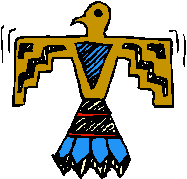

 The Southern, Central & Northern Pomo Indians were inhabiting the
Mendocino Sonoma coast when trappers & settlers started arriving in this area. The
Southern Pomo are called the Kashia, the Central Pomo are called the Yokiya, and the
Northern Pomo are called the Bokeya. They territory ranged from about the Russian River on
the south to the northern border of Mendocino county on the north and extended into Lake
county on the east. Different tribes had different resources which they traded with other
tribes. The coast region provided recreation and all kinds of edibles. By 1811, when 95
Russian trappers, accompanied by 40 Aleut and Kodiak Indians, arrived from Alaska and
established a fur trading colony at what is now Fort Ross, many Pomos had already been
forced into Spanish missions or onto White reservations. Also, during the 1820’s
& 1830’s, the Pomos were subjected to ever increasing raids by Mexicans to secure
slaves, and epidemic diseases such as smallpox and cholera. In contrast, the Pomos found
the Russian traders to be friendly. The Russian trappers had found that having the local
Indians on their side was to their advantage. Many of the Pomos worked for the Russians.
There was also an intermingling of the two cultures, religions & languages. Some of
the Pomos also married Russians. The Russian trappers only stayed until 1842. When the
Russians returned to Russia some of the Pomos went with them.
The Southern, Central & Northern Pomo Indians were inhabiting the
Mendocino Sonoma coast when trappers & settlers started arriving in this area. The
Southern Pomo are called the Kashia, the Central Pomo are called the Yokiya, and the
Northern Pomo are called the Bokeya. They territory ranged from about the Russian River on
the south to the northern border of Mendocino county on the north and extended into Lake
county on the east. Different tribes had different resources which they traded with other
tribes. The coast region provided recreation and all kinds of edibles. By 1811, when 95
Russian trappers, accompanied by 40 Aleut and Kodiak Indians, arrived from Alaska and
established a fur trading colony at what is now Fort Ross, many Pomos had already been
forced into Spanish missions or onto White reservations. Also, during the 1820’s
& 1830’s, the Pomos were subjected to ever increasing raids by Mexicans to secure
slaves, and epidemic diseases such as smallpox and cholera. In contrast, the Pomos found
the Russian traders to be friendly. The Russian trappers had found that having the local
Indians on their side was to their advantage. Many of the Pomos worked for the Russians.
There was also an intermingling of the two cultures, religions & languages. Some of
the Pomos also married Russians. The Russian trappers only stayed until 1842. When the
Russians returned to Russia some of the Pomos went with them.
During the 1840’s & 1850’s the large numbers of settlers and fortune seekers moved into this area. Some of the Pomo worked for them. Others were enslaved.
 In 1857 the U.S. government set up a reservation called Fort Bragg for
the Pomos. The Fort Bragg reservation was abandoned in 1867. At that time, the 2,000 or so
Pomos living there were sent to other reservations in California. Some of the Pomos
escaped and returned to their homeland only to find that others had moved in making them
homeless and landless with no legal recourse. In an 1860 report, the California
Legislature began by saying "For gross mismanagement and fraudulent practices the
Mendocino Reservation should rank at the head of all Government failures."
In 1857 the U.S. government set up a reservation called Fort Bragg for
the Pomos. The Fort Bragg reservation was abandoned in 1867. At that time, the 2,000 or so
Pomos living there were sent to other reservations in California. Some of the Pomos
escaped and returned to their homeland only to find that others had moved in making them
homeless and landless with no legal recourse. In an 1860 report, the California
Legislature began by saying "For gross mismanagement and fraudulent practices the
Mendocino Reservation should rank at the head of all Government failures."
A white settler named Charlie Haupt married a Pomo, bought a ranch and invited her people to live on their ranch with them. This ranch was several miles inland between Fort Ross & Stewart’s Point. The Kashia Pomo lived on this ranch from 1859-1919 when they moved onto 40 acres purchased for them by the U.S. government.
In 1812 California was still a territory of Spain. California became part of Mexico in 1822.
The Gualala River was used as a boundary line by the Pomo’s to separate the Bokeya and Yokiya tribes, by Rafael Garcia’s Mexican land grant until it was canceled, by Rancho de Herman and since March 11, 1859, it has been the border between Sonoma & Mendocino counties.